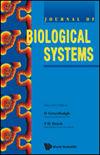交互种群数学建模中的一些方法论问题
IF 1.5
4区 数学
Q3 BIOLOGY
引用次数: 0
摘要
在本文中,我们关注模型构建的一些重要方面。讨论特别关注捕食者-猎物相互作用的情况。我们在这里介绍两种模型,它们的细微差别仅仅在于捕食者的生存方式。在前一种情况下,它们只以模拟的猎物为食,即成为专家;在第二种情况下,它们是多面手,也就是说,它们可以依靠其他没有明确建模的食物资源生存。但我们主要关注的是猎物,如果数量减少到非常少,它们可能会因为阿尔利效应而消失。另一方面,它们也表现出群体行为。我们的主要目的是讨论这种情况下的数学建模问题。我们在这个例子中表明,建模需要的不仅仅是来自不同系统的方程补丁。对模型的分析表明,在特殊捕食者的情况下,生态系统可能会崩溃。如果捕食者有其他的食物来源,它们反而可以茁壮成长。两种模型都表现出无猎物状态和共存状态之间的双稳定性。本文章由计算机程序翻译,如有差异,请以英文原文为准。
ON SOME METHODOLOGICAL ISSUES IN MATHEMATICAL MODELING OF INTERACTING POPULATIONS
In this paper, we focus on some important aspects of model building. The discussion specifically concerns the case of predator–prey interactions. We introduce here two models whose slight difference lies just in the way predators survive. In the former, they are taken to feed only on the modeled prey, i.e., to be specialists; in the second one, they are generalists, i.e., they can survive on other not explicitly modeled food resources. But our main focus is on the prey, that may disappear due to the Allee effect, if reduced to very low numbers. On the other hand, they also exhibit herd behavior. Our main aim is the discussion of the issues of mathematical modeling of such situation. We show on this example that modeling requires much more than equations patching from different systems. The analysis of the models indicates that the ecosystem may collapse in the case of specialist predators. If the predators have other feeding resources, they instead can thrive. Both types of models exhibit bistability between the prey-free state and coexistence.
求助全文
通过发布文献求助,成功后即可免费获取论文全文。
去求助
来源期刊
CiteScore
2.80
自引率
12.50%
发文量
31
审稿时长
1 months
期刊介绍:
The Journal of Biological Systems is published quarterly. The goal of the Journal is to promote interdisciplinary approaches in Biology and in Medicine, and the study of biological situations with a variety of tools, including mathematical and general systems methods. The Journal solicits original research papers and survey articles in areas that include (but are not limited to):
Complex systems studies; isomorphies; nonlinear dynamics; entropy; mathematical tools and systems theories with applications in Biology and Medicine.
Interdisciplinary approaches in Biology and Medicine; transfer of methods from one discipline to another; integration of biological levels, from atomic to molecular, macromolecular, cellular, and organic levels; animal biology; plant biology.
Environmental studies; relationships between individuals, populations, communities and ecosystems; bioeconomics, management of renewable resources; hierarchy theory; integration of spatial and time scales.
Evolutionary biology; co-evolutions; genetics and evolution; branching processes and phyllotaxis.
Medical systems; physiology; cardiac modeling; computer models in Medicine; cancer research; epidemiology.
Numerical simulations and computations; numerical study and analysis of biological data.
Epistemology; history of science.
The journal will also publish book reviews.

 求助内容:
求助内容: 应助结果提醒方式:
应助结果提醒方式:


